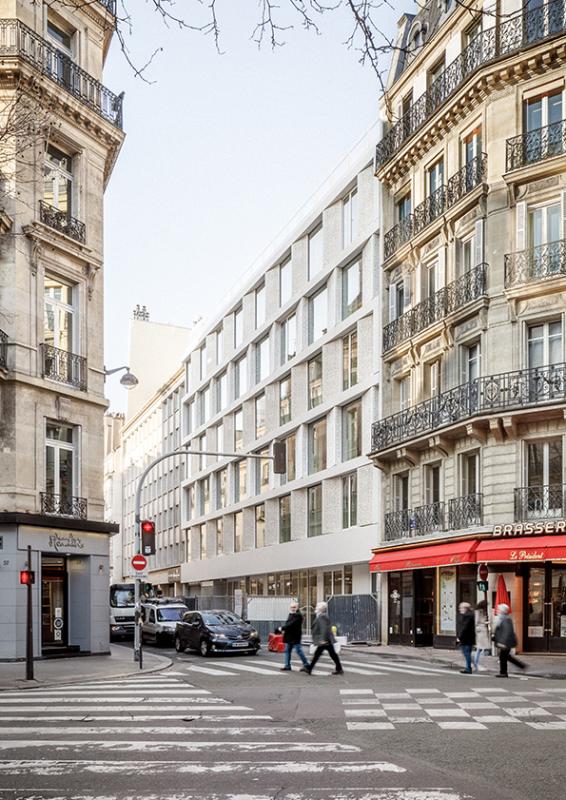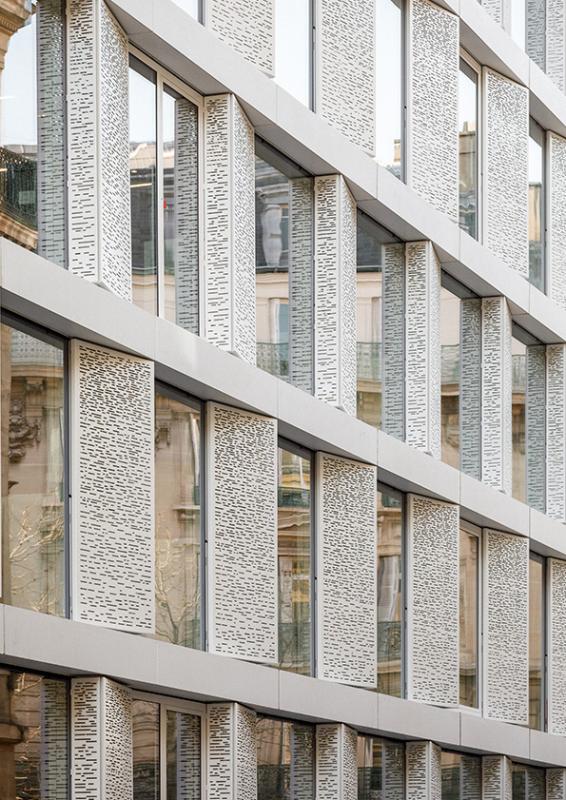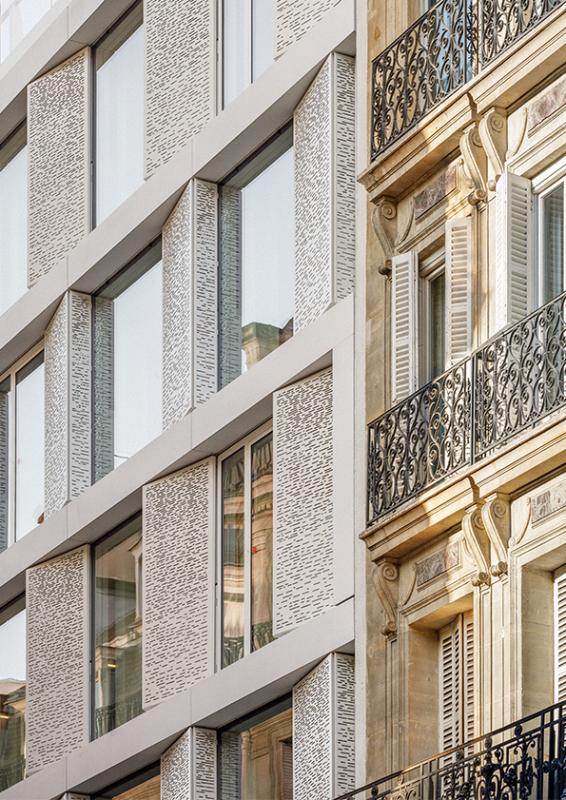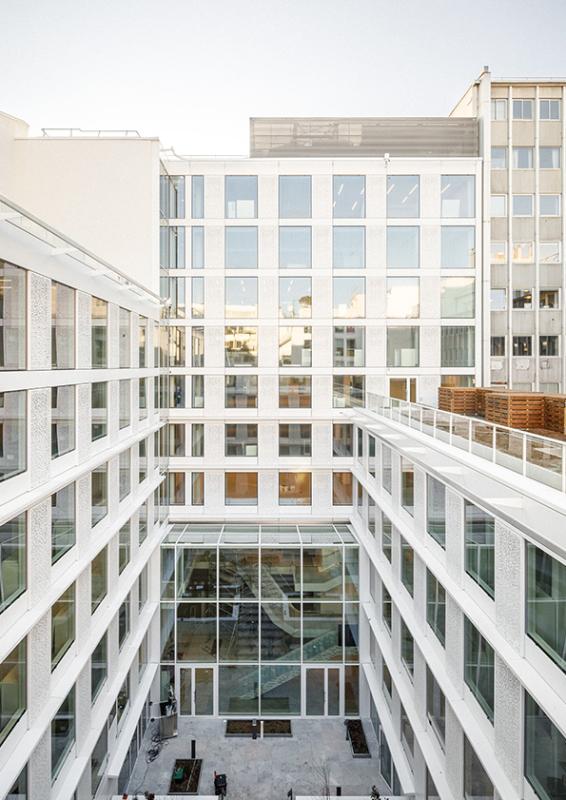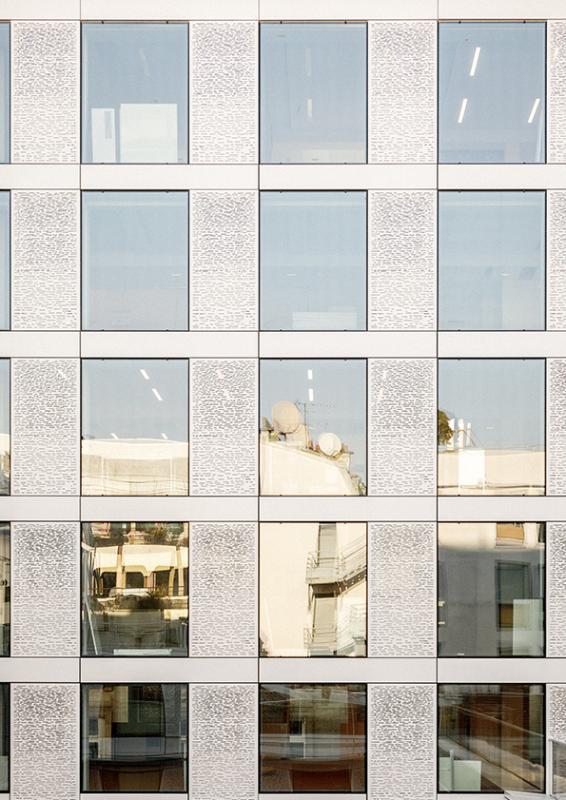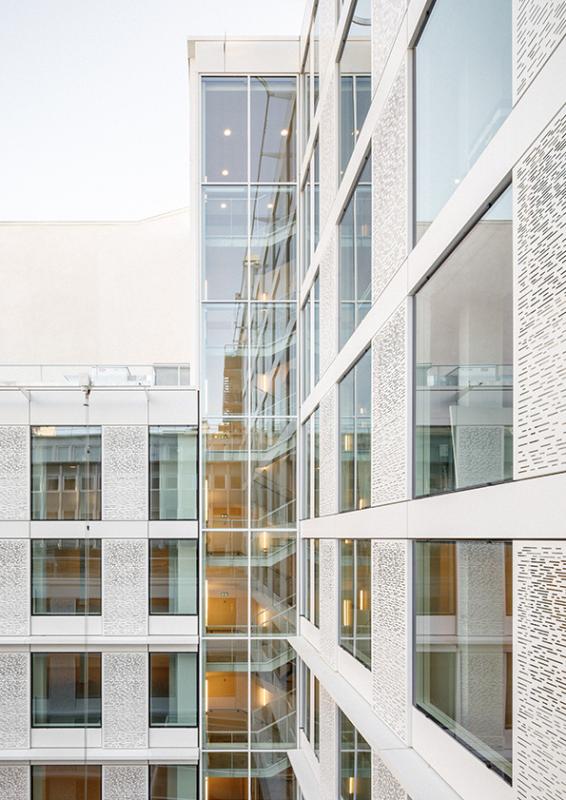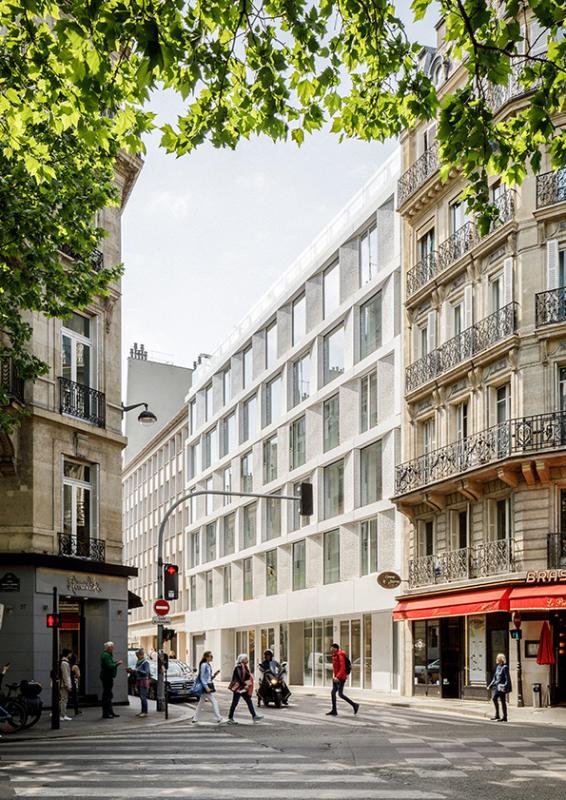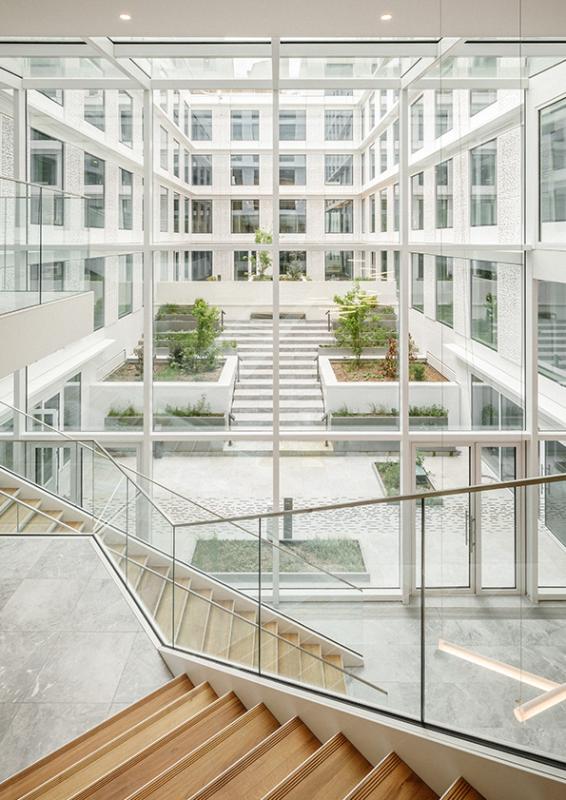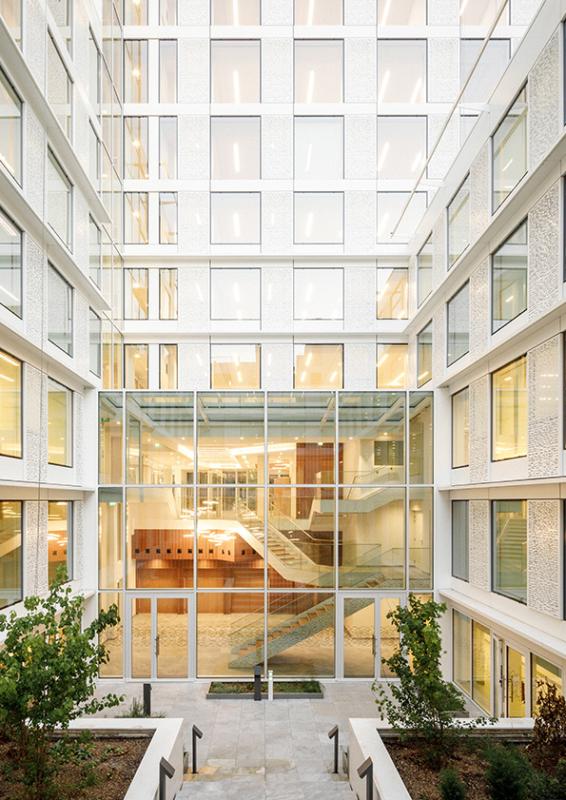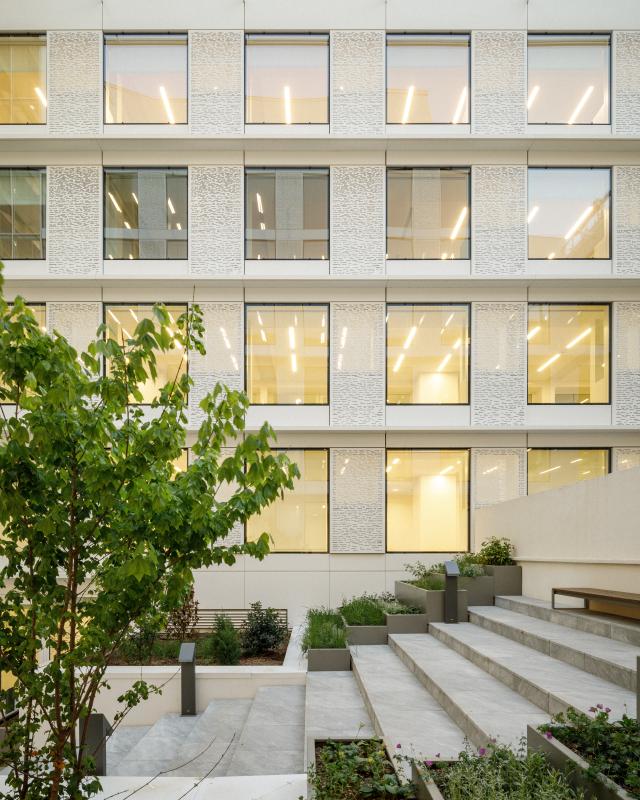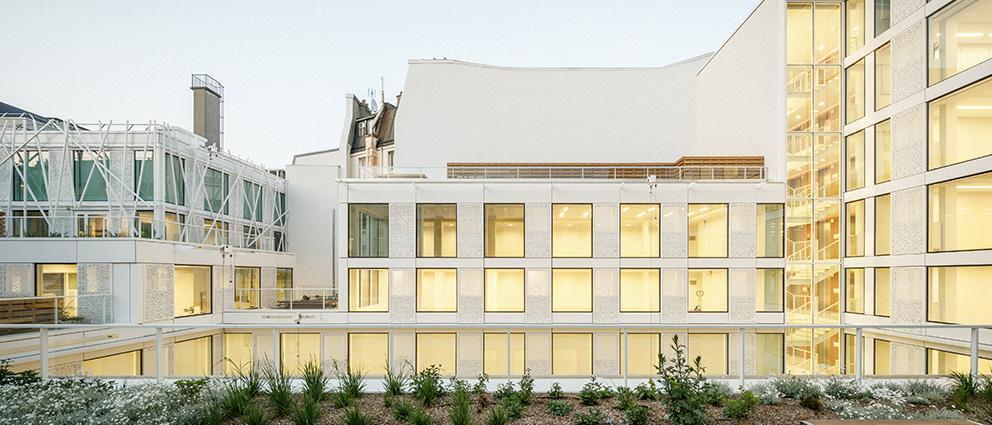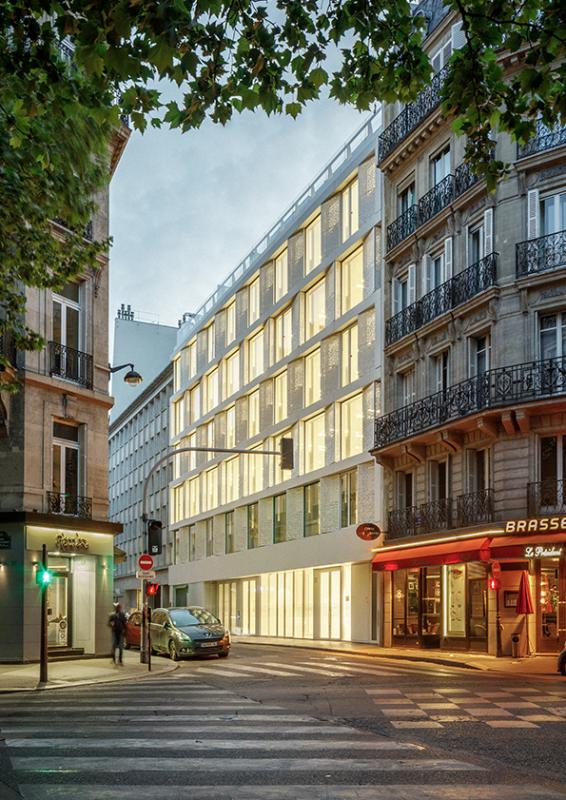31 Colisée
Restructuring of an office building
In a prime Parisian location between the Champs-Élysées and Rue du Faubourg Saint Honoré, 31 Colisée dates from the late 1960s; the building has been poorly managed and is in need of a thorough restructuring to make it more environmentally efficient. The aim of the operation is to restore a quality to the interior spaces by optimizing the very limited ceiling heights, to redistribute the floor spaces according to the irregular structural grid of columns, and to render the roof terraces and exterior patios accessible.
The architectural concept of the project integrates facades, MEP and structural work and is clearly visible in elevation: the structural framework of the building is made up of a pair of columns 1m apart at approximately 3m intervals. This composition is subtly revisited in the new project by maximising visual comfort with a large fixed glazing panel over two-thirds of the facade; the remaining third, which corresponds to the width between the two existing metal posts, is equipped with an inward-opening double-casement window above a solid spandrel panel. The latter enables the integration in each module of decentralised air treatment units, heating and air conditioning. This decentralised system allows HVAC treatment without the addition of supply ducts or large plant rooms. The air intake and outlet are made directly through the solid spandrel panel on the facade.
On the outside, the 1m grid comprising the frame, spandrel panel and grills for the HVAC equipment, is concealed by a perforated aluminium shutter. The facade is thereby very simple in appearance, alternating between large full-height SSG glazed panels and perforated metal panels with no visible fixings. These repetitive elements made it possible to design it as a unitised facade, which was essential for its installation within a very restricted space, on the street and courtyard sides, as well as managing the realisation of details at the interface between different trades.
The facades also incorporate a certain number of complex details, which are not immediately visible. At the heart of the city block, the compact atrium required the addition of a 1m (combined vertical height and horizontal depth) fire barrier on each of the first five levels. This is provided by a solid vertical panel to which is added a horizontal section in order to limit the visual impact of the fire barriers.
A Corian cladding snakes in front of the slab edges between each floor of the building, which turns back against the adjoining buildings at every other level. Setback 30 cm, the prefabricated facade blocks integrate perforated metal shutters which give a rhythm: on the street, these openwork screens are alternately oriented to the right or the left, which reinforces the kinetic ‘zigzag’ effect. On the courtyard, the system is simplified with shutters placed in the plane of the facade. The grid enables the integration of the fire barrier made necessary by the dimensions of the atrium.
The standard facade module is composed of a full-height fixed glazed panel and an opening window above a solid spandrel panel. The latter makes it possible to incorporate an air treatment unit that takes in and evacuates air through the facade. This avoids the need for ducting beneath the floor slabs, thus maximising ceiling heights.
The window, spandrel panel and air intakes are hidden behind the perforated metal shutters. These are mobile on the street side so as to animate the facade according to whether the windows are open or closed. With the window open, the shutter sits parallel to the facade and the Corian motif.
A rooftop extension has been built up to the rear of the courtyard, picking up the same grid, with the addition of a largely perforated aluminium mesh. All the facade elements are white for additional light and a homogenous ensemble.The project is targeting high-level environmental labels, including HQE Exceptionnel, BREEAM Excellent and BBC.

